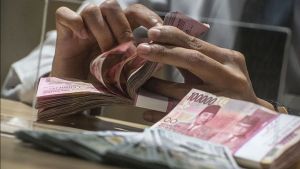YOGYAKARTA One term that often appears in economic or financial activities is a surplus. This term is often mentioned by the Government when explaining economic conditions. Then, what is a surplus?
In the Big Indonesian Dictionary (KBBI) the surplus is interpreted as a number that exceeds the usual results; excess; remainder. The definition of the term indicates the number of items that are more than usual.
Definition of the surplus itself is generally said to be a condition when the number of existing assets is more than the total used or needed.
The term surplus can be used in various fields. For example, in the financial theme, especially the budget, the surplus is interpreted as a condition when the income figure exceeds the cost that must be paid. This condition usually occurs within the scope of the government or company.
Meanwhile, in the context of households, the surplus is a condition where the amount of income obtained is greater than the figure that must be spent on needs.
It should be underlined that surpluses and deficits are different conditions, both are the opposite. The deficit is simply interpreted as a condition when spending greater than income.
In economic science, the surplus is divided into two types, namely a consumer and producer surplus. Both are used to analyze how the market works, such as the analysis of offers, demand, and many more. The following is an explanation of each type of surplus.
Consumer surpluses occur that consumers pay prices for goods or services with a higher value than the market price. An example of a consumer surplus is that you buy one candy for Rp800, even though the market price for candy you buy is Rp1000. This means that consumers have a surplus of Rp200,-.
This condition intersects directly with producers. The producer surplus occurs when producers manage to sell goods or services higher than the market price. An example of the producer surplus was when Factory A managed to sell its candy products for Rp. 1000, even though the market price was Rp. 800,-. This means that the producer surplus is Rp. 200,-.
As mentioned earlier, the consumer surplus and the producer surplus have different formulas. Consumer surplus formula, the formula used is (1/2) x Qe xP.
The information is as follows.
While the manufacturer's surplus formula is the selling product price - the minimum price of the producer.
The surplus condition could be triggered by a series of events related to economic activity. Some of the triggers are as follows.
The surplus can have a good and bad impact, depending on what kind of surplus it is. Some of the possible impacts are as follows.
That's information about what a surplus is. To get other interesting information, visit VOI.ID.
The English, Chinese, Japanese, Arabic, and French versions are automatically generated by the AI. So there may still be inaccuracies in translating, please always see Indonesian as our main language. (system supported by DigitalSiber.id)












